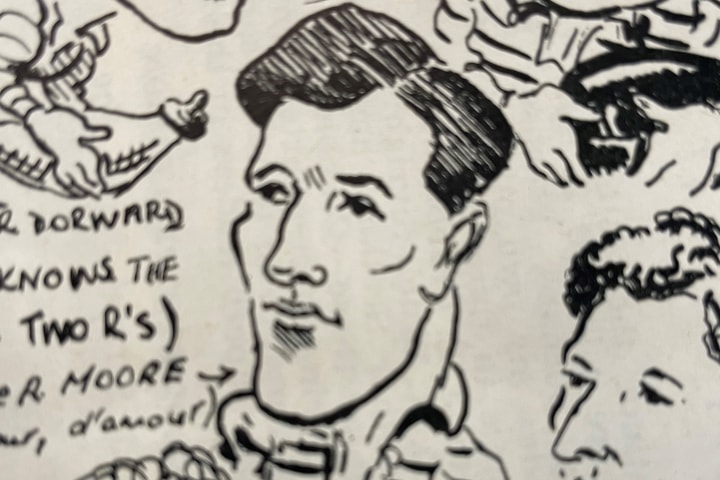
21 November 2025


In the attack leading to the capture of the Messines ridge in West Flanders, Belgium, by the Allies between June 7th and 14th 1917, the New Zealand Expeditionary Force were to the fore. By the time the NZ troops were withdrawn after two days on June 9th, the NZEF had suffered around 3,700 casualties of which more than 800 were fatalities. Included in those figures were the deaths on June 7th of two of the four All Blacks who died that month - James Alexander Steenson (Jim) Baird and George Maurice Victor Sellars. George Sellars was the older of the two and had a distinguished rugby career up until his departure for France in September 1916. Born on April 16th 1886 to Edward and Maud Sellars, he was a shipwright by trade and a stalwart member of Ponsonby District rugby football club from 1906. A very strong front row forward, he played 29 matches for Auckland between 1909 and 1915, toured Australia with the NZ Maoris in 1910 and played for the North Island in 1912. He won his All Black colours in the 2-man front row against Australia in Wellington on September 6th 1913 in the 1st test of the 3-match series which was won by 30-5. He then embarked with the All Blacks on their tour of North America where he played in 14 matches including scoring two tries in the 33-0 victory against the University of Santa Clara. Three days later, he won his 2nd and final cap in the 51-3 rout of the USA at Berkeley on November 15th 1913. He was not available for the All Black tour of Australia in 1914 but played for Ponsonby and Auckland in 1915.
After his arrival in France as a private in the 1st Battalion of the Auckland Infantry Regiment in March 1917, he served until the battle of Messines in which he was killed on the first day of the battle while carrying a wounded soldier to safety. Although he was buried, his body was never found and he is commemorated on the Messines Ridge (New Zealand) Memorial in the British Cemetery. Jim Baird was only 23 when he set off for France in October 1916 as a private in the 1st Battalion of the Otago Infantry Regiment. Born in Dunedin on December 17th 1893 to James and Lucinda Baird, he was a machinist by trade and a member of the local Zingari Richmond club. His senior rugby career, although distinguished, was remarkably short as he only played three first-class matches, all in 1913. Two of these matches were for Otago and the third was his sole appearance for the All Blacks when he played against Australia on his home ground at Carisbrook, Dunedin in their 2nd test victory by 25-13. He was a late replacement for Eric Cockroft and is believed to have been chosen despite his inexperience because he was locally based. Although commonly held to have played centre in this match, both the local papers (Otago Daily Times and Otago Witness) credit him as playing on the right wing. He was then picked to play in the 3rd test but had to withdraw due to an injured hand. Illness prevented him playing during the 1914 season and put an end to his rugby career at the highest level. He served in France from February 1st 1917 up to the opening day of the assault on the Messines ridge on June 7th in which he was mortally wounded. He died later that day as a result of his wounds in Bailleul, France in the 1st Australian Casualty Clearing Station. He is buried in the Bailleul Communal Cemetery Extension in France.
Sources:
About the Author- A professional musician and arts administrator, Richard Steele has had a life-long love of sport. He has been on the committee of the World Rugby Museum at Twickenham since 2005.
Follow the World Rugby Museum on Facebook, Twitter and Instagram.